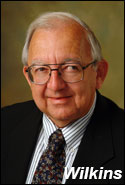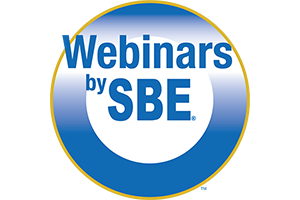Originally streamed September 8, 2022
The United States has had an emergency alerting system since 1951 and we are happy that it has never had to be used for a “National Alert.” Over the years, the system has gone through several changes, and it has become a valuable tool for state and local alerts including weather, child abductions, and local disasters while standing ready for any national alert that may be issued.
To create and maintain a successful EAS system requires cooperation with national, state and local agencies plus the broadcast and cable community.
This presentation covers the history of EAS, FCC Rules and guidelines for the creation and maintenance of a state EAS system. The key is ensuring the system is as redundant as possible and tested on a regular basis. Information covering the Alabama satellite distribution system and the state’s wide EAS monitoring system is shared.
Your Instructor
Larry Wilkins, CPBE, AMD, CBNT, Director of Engineering Services, Alabama Broadcasters Association
 Throughout his career he has built numerous radio/television studio and transmitter facilities. Wilkins retired in 2007 as assistant director of engineering for Cumulus Media, a job he held for 10 years. He is presently working with the Alabama Broadcasters Association as director of engineering services. In this position he oversees the state EAS satellite distribution system, serves as the state ABIP inspector and in 2012 developed the ABA Engineering Academy, which offers courses for radio and television engineers.
Throughout his career he has built numerous radio/television studio and transmitter facilities. Wilkins retired in 2007 as assistant director of engineering for Cumulus Media, a job he held for 10 years. He is presently working with the Alabama Broadcasters Association as director of engineering services. In this position he oversees the state EAS satellite distribution system, serves as the state ABIP inspector and in 2012 developed the ABA Engineering Academy, which offers courses for radio and television engineers.
He also worked for the Auburn Radio Network for more than 30 years handling on site engineering duties for all Auburn University Football games. Wilkins designed and supervised the installation of the Alabama Digital Satellite Network that distributed regional sports broadcast in the Southeast. The Auburn Network was owned by Colonial Broadcasting, of which Wilkins was chief engineer. In 1994, the broadcast rights were purchase from Colonial by Auburn Sports Network LLC owned by Mike Hubbard. He continued as engineer of the network until retirement in 2013.
In addition, Wilkins was the on-site engineer for Birmingham Stallions (USFL) for three years and was a freelance engineer with ABC TV covering SEC football and CBS Radio covering SEC basketball.
Wilkins has served on the SBE National Board of Directors and has served on the SBE Certification Committee for 20 years. He holds the Certified Professional Broadcast Engineer (CPBE), AM Directional (AMD) and Certified Broadcast Network Technology (CBNT) certifications. In 2005 he received the Robert W. Flanders SBE Engineer of the Year award. The Alabama Broadcasters Association awarded Wilkins the Broadcaster of the Year award in 2015. Radio World honored Wilkins with the Excellence in Engineering award in 2018
Outside broadcasting, he, and his wife of 35 years Cathy, are avid rose gardeners and are members of the Montgomery Rose Society and the American Rose Society.
SBE Recertification Credit
The completion of a webinar from Webinars by SBE qualifies for 1 credit, identified under Category I of the Recertification Schedule for SBE Certifications.
Registration and Pricing
This webinar is approximately 60 minutes long.
SBE Members: $90
MemberPlus Members: Free
Non-Members: $120
Questions?
If you have questions regarding this course, contact Cathy Orosz via email or by phone at 317-846-9000.
More information about registering using the SBE MemberPlus benefit
All SBE webinars are included at no additional cost for members who upgrade or join using the SBE MemberPlus membership option. You get access to all archived SBE webinars and any new live webinars SBE presents, all for no extra cost.
Access to the SBE webinars through the SBE MemberPlus program is limited to the MemberPlus-purchaser only. You are not permitted to distribute, sell, copy, share, project or otherwise make the webinars available to any other individual or group without express written permission by the SBE.


